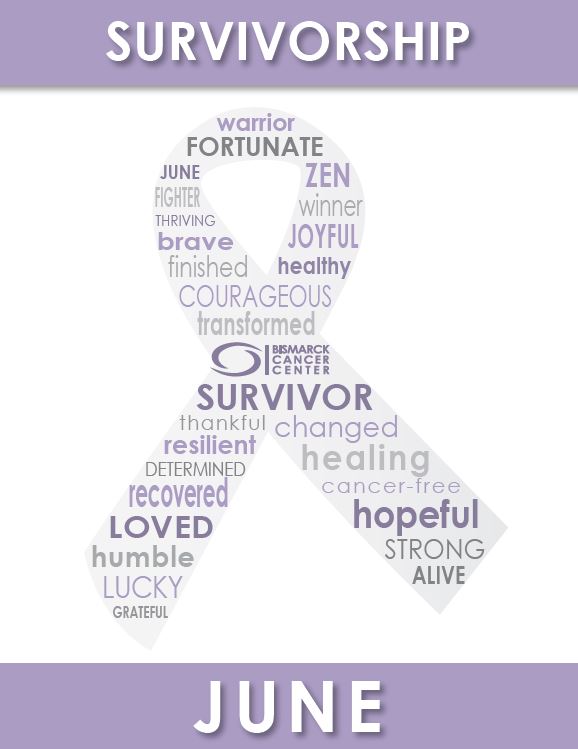What is Survivorship?
A person who has had cancer is commonly called a cancer survivor. “Co-survivor” is sometimes used to describe a person who has cared for a loved one with cancer.
Not everyone who has had cancer likes the word “survivor.” The reasons for this may vary. For instance, they may simply identify more with being “a person who has had cancer.” Or if they are dealing with cancer every day, they may describe themselves as “living with cancer.” Therefore, they may not think of themselves as a survivor.
Living with a history of cancer is different for each person. But most people have the common belief that life is different after cancer.
Other common reactions that people have after cancer include:
- Appreciating life more.
- Being more accepting of themselves.
- Feeling more anxious about their health.
- Not knowing how to cope after treatment ends.
Understanding survivorship
Cancer survivorship has at least two common meanings:
- Having no signs of cancer after finishing treatment.
- Living with, through, and beyond cancer. This means that cancer survivorship starts at diagnosis. It includes people who receive treatment over a longer time. Their treatment can lower the chance of the cancer coming back or help to keep the cancer from spreading.
The phases of survivorship
There are 3 phases of survivorship:
- Acute survivorship starts at diagnosis and goes through to the end of initial treatment. Cancer treatment is the focus.
- Extended survivorship starts at the end of initial treatment and goes through the months after. The effects of cancer and treatment are the focus.
Permanent survivorship is when years have passed since cancer treatment ended. There is less of a chance that the cancer may come back. Long-term effects of cancer and treatment are the focus.

Survival statistics
The number of people who have had cancer has gone up significantly over the last 45 years in the United States. In 1971, there were 3 million people with cancer. Today there are more than 15.5 million.
- About 67% of today’s cancer survivors were diagnosed five or more years ago.
- About 17% of all cancer survivors were diagnosed 20 or more years ago.
- Nearly half (47%) of survivors are age 70 or older.
Most cancer survivors have had common cancers:
- 23% – breast cancer
- 21% – prostate cancer
- 9% – colorectal cancer
- 8% – cervical, uterine, or ovarian cancers
- 8% – melanoma
Higher survival rates may be due to the following major improvements in cancer prevention and treatment:
- Screening tests may find cancers earlier. These tests include:
- Mammography for breast cancer
- Prostate-Specific Antigen (PSA)for prostate cancer
- Colonoscopy for colorectal cancer
- Pap test for cervical cancer
Existing treatments are being used in better ways:
- Less side effects, which keeps planned treatments on schedule
- Newer treatments such as targeted therapy and immunotherapy
Learn more about the history of cancer research on the American Society of Clinical Oncology’s website.
Surviving cancer: What to expect
At the end of treatment, a person has less frequent contact with the health care team. Survivors may have:
- Relief that treatment is over
- Uncertainty about the future
- Increased anxiety
- Fear that the cancer will come back
- Guilt about surviving, having lost others to cancer
- Physical, psychological, sexual or fertility problems
- Relationship struggles
- Discrimination at work
- A social network that now feels like it is not enough
Changes in Relationships
When active treatment is over, some survivors’ needs change, and relationships may shift. For example:
- Some friends may become closer, while others keep themselves at a distance.
- Families can become overprotective. Or it may feel as if they are no longer being as supportive.
- Relationship problems from before the cancer diagnosis can surface again.
What you can do:
- Understand that the entire family changes from the cancer experience in ways they may not be aware of.
- Work through these changes to get the support you need.
- Maintain open and ongoing communication.
- Realize that when and how you share your diagnosis is a personal choice.
- If you choose to talk about your journey, set limits on what you share.
- Think about what coworkers might ask you about during and after treatment. Decide in advance how you want to answer their questions.
*Adapted from the American Cancer Society’s publication and the National Cancer Institute’s Office of Cancer Survivorship.
